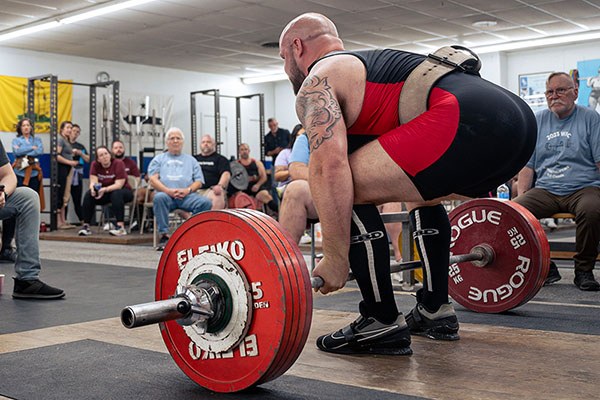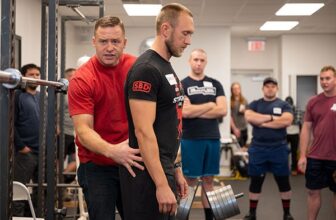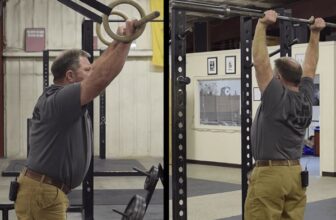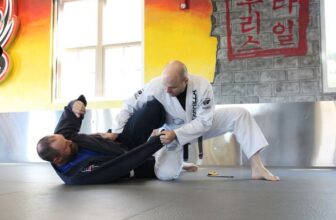
[adinserter block=”2″]
The Effect of Arm Angle in the Supine Grip in the Deadlift
by Mia Inman, PhD, SSC | December 05, 2023
Efficient pulling mechanics in the deadlift are constrained by three
factors: 1) the bar must be placed directly over the mid-foot, and
maintain that position during the lift, 2) the body-barbell system
must be in balance over the mid-foot, and 3) the efficiency with
which the lats pull back on the humerus. These three factors dictate
the standard pulling position in the setup of the deadlift, in which
the hips are high, the shins are against the bar, and the shoulders
are slightly ahead of the bar. This forward shoulder position results
in a ~7-10 degree deviation in the angle of the arm segment from a
vertical, or plumb, line.
At this slight angle,
the forces along the arm segment are mostly tension. However, some
moment down the arm exists, caused by gravity that tries to pull the
bar forward and the arm into a vertical alignment. The bar must be
held against the legs during the pull to prevent the bar from
swinging forward, which would introduce an unnecessary moment arm
between the bar and the mid-foot and prevent a sufficiently heavy
deadlift from being pulled from the floor.
You might think to pull
your shoulders back, so that they are directly over the bar, with no
moment around the shoulder joint. However, with almost all of your
body mass behind the bar, you would be out of balance, with your
weight on your heels. You may counter this by dropping the hips, but
this would push your shins forward, and the bar forward of the
mid-foot, violating the criteria for an efficient deadlift.
Thankfully, your body knows mechanics far better than you do, and
will automatically shift your hips back up and your shoulders
forward, to put you in an optimum position to pull a heavy weight
from the floor.
So, we are stuck with
this “shoulders ahead of the bar” position for efficient
pulling mechanics, and the resultant gravitational moment force
around the shoulder joint and down the arms. To keep the bar against
the legs, and maintain efficient pulling mechanics, we use the lats
to provide a counterforce to the moment around the shoulder. The
lats, which distally insert on the intertubercular (bicipital) groove
near the head of the humerus, pull back on the arm (the wrench) very
close to the shoulder joint (the bolt), whereas gravity acting on the
bar is pulling at the far end of the arm (the wrench). The lats are,
therefore, at a significant mechanical disadvantage. The lats need to
be very strong and pull at a very efficient angle of attack on the
humerus, in order to win the battle for control of the arm segment,
and keep the bar against the legs and over the mid-foot.
There is an internal
moment arm between the head of the humerus in the glenoid fossa and
the distal insertion of the lats, which multiples the contractile
force of the lats. Critically, in the standard pulling position
described above, when using a double-overhand grip, the lats pull on
the humerus at ~90 degrees. This angle of attack maximizes the
internal moment arm, and consequently the counterforce provided by
the lats, enabling the position of the bar to be maintained against
the legs.
This is all well and
good, but difficulties may arise when the weight gets sufficiently
heavy that you have trouble holding onto the bar with a
double-overhand grip. You may instead choose to use an alternate
grip, where one hand is supinated while the other is prone. As has
been discussed in another article, the bar on the supine side can
drift forward away from the shins as the bar comes off the floor due
to a number of factors, one of which is the change in arm angle due
to the position of the hand behind the bar.
When you move your hand
from a prone position (palm on the front side of the bar) to a supine
position (palm on the back side of the bar), this changes the angle
of the arm. As can been seen in Figure 1, when Elliot moved his hand
from a prone to a supine grip, this changed his arm angle by ~3
degrees.

Figure 1. Effect on the supine
grip on arm angle.
This seemingly subtle shift to a more horizontal arm angle has two
implications with regard to your ability to maintain the bar against
your shins on the supine side.
The first is that the
more horizontal arm angle decreases the angle of attack of the lats
on the humerus. This reduces the internal moment arm between the
distal insertion of the lats and the shoulder joint, diminishing the
pulling efficiency of the lats against the humerus. While this may
only be a few degrees of change (this will vary with the thickness of
both the bar and the distal end of the palm), the gravitational
moment force around the shoulder joint imposed by very heavy weights
may be too much for your lats to provide a sufficient counterforce,
and the bar may swing forward of your legs on the supine side.
This lack of pulling
efficiency from the lats is compounded by the second effect from
changing the arm angle. As the arm becomes more horizontal (less
vertical), the forces down the arm segment have less tension and more
moment. More moment means more rotational force around the shoulder
joint, that has to be countered by the (now less efficient) lats.
The external moment
arm, which introduces moment at the shoulder joint and down the arm,
is presumed to be the horizontal distance between the shoulder joint
and the bar. This moment arm should, therefore, be the same for both
the prone and the supine grip, since the position of the bar relative
to the shoulder joint is the same for both grips.
However, as noted
above, due to the more horizontal arm angle on the supine side, there
must be more moment around the shoulder joint. Therefore, the moment
arm between the shoulder joint and the end of the arm segment on the
supine side must have increased. To understand how the moment arm can
increase by simply changing the grip, while the relative positions of
the shoulder joint and bar remain the same, we have to think about
the moment arm(s) between the shoulder and the bar in a slightly
different way.
Force is transmitted
from the shoulder joint, down the rigid arm, through the palm to the
fingers on the underside of the bar. Rather than thinking of this
being a single segment, we can consider instead it as two segments.
The first is from the shoulder joint to the end of the rigid arm
segment where it contacts the bar, at the distal end of the palm. The
second is from the distal end of the palm to the proximal phalanges
of the fingers underneath the bar, supporting the load (the distal
and middle phalanges help to maintain the position of the bar
directly over the proximal phalanges).
Therefore, two external
moment arms have to be considered when looking at the effect of a
supine grip on the ability to keep the bar against the shins:
1. M.A.arm is the
external moment arm from the head of the humerus in the glenoid fossa
to the distal end of the palm. This moment arm multiplies the
gravitational moment force trying to pull the arm to a vertical
position. As can be seen Figure 1, there is a significant difference
in M.A.arm between the prone and supine grips. At heavy weights, the
larger M.A.arm on the supine side will significantly increase the
moment at the shoulder, resulting in an increased tendency for the
bar to drift forward of the legs and mid-foot.
2. M.A.fingers is the
external moment arm from the point of force application of the bar
(sitting on the proximal phalanges of the fingers) to the distal end
of the palm behind the bar. The fingers are under a combination of
moment and tension, and this moment arm multiplies the force of the
load on the bar to try and open up the fingers and loosen the grip.
If you have a thicker palm and/or use a thicker bar, this moment arm
will increase, making it more difficult for you to maintain your grip
on the bar.
There are advantages
and disadvantages to an alternate grip. You are better able maintain
your grip on the bar with an alternate grip because as the bar
rotates out and down from the supine fingers it rotates into
and up the prone fingers, thus canceling the rotation. But the
fact that the palm is behind the bar on the supine side means that
some moment force exists on that side of the pull that will have to
be countered if the bar is not to drift forward from the supine side.
Realizing that this happens and why allows the lifter to plan for the
event.
[adinserter block=”2″]
Credit : Source Post






